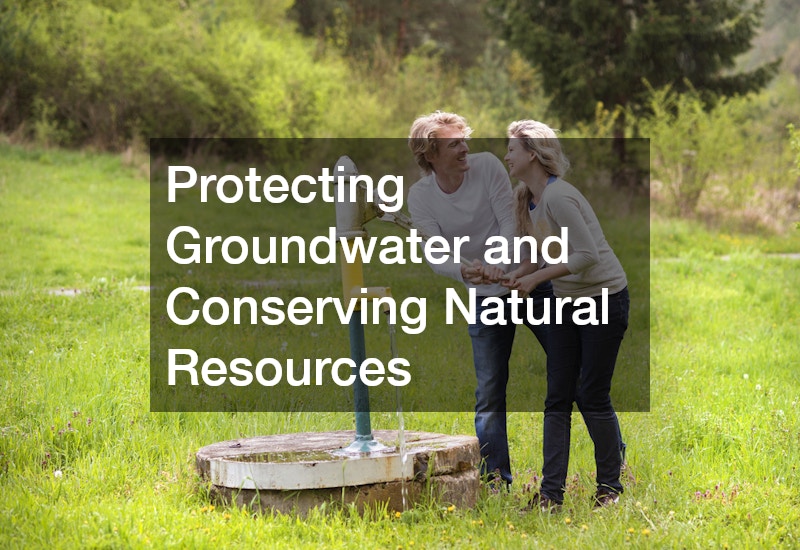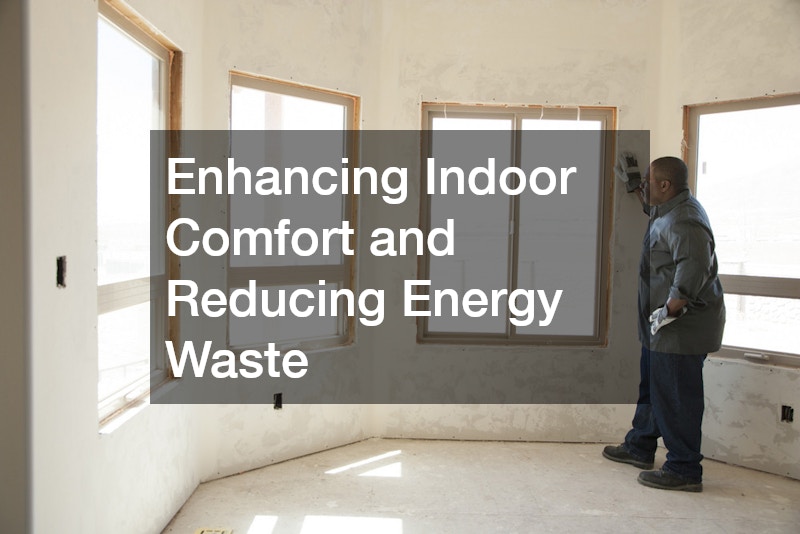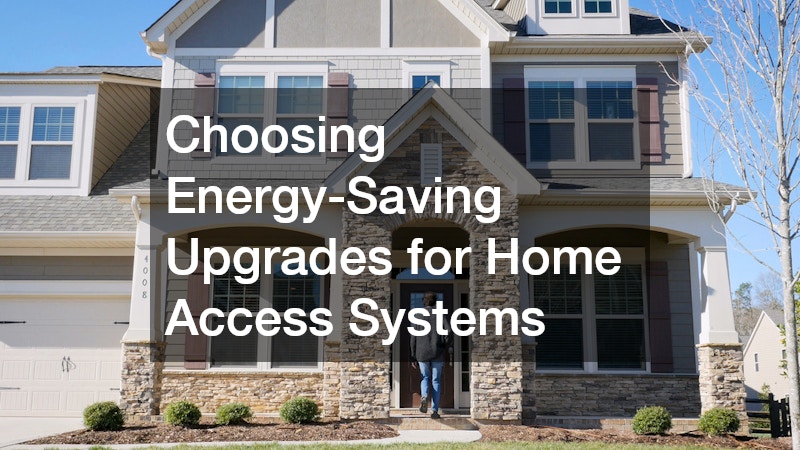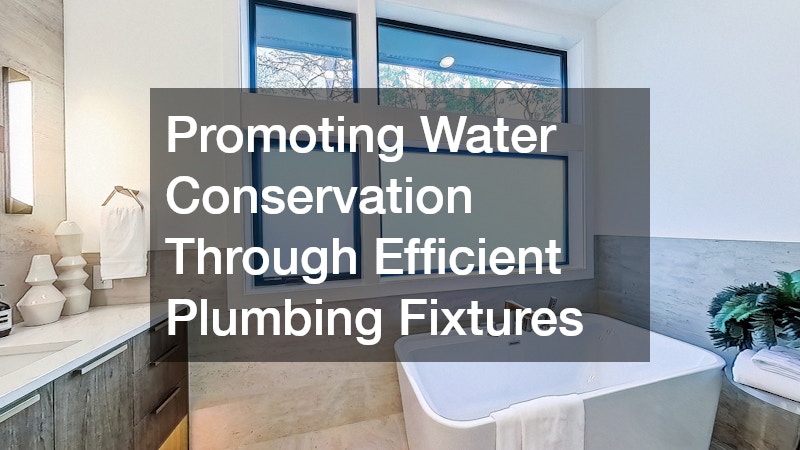Creating an eco-friendly home is no longer just a trend; it’s a lifestyle choice that benefits both the environment and your household. With rising energy costs, water shortages, and increasing awareness of climate change, homeowners are seeking practical ways to reduce their ecological footprint while improving the comfort, health, and efficiency of their living spaces. Sustainability at home goes beyond recycling or reducing plastic use—it encompasses energy efficiency, water conservation, eco-friendly landscaping, and the use of materials and services that promote long-term environmental health.
From the structure of your home to the surrounding landscape, every choice you make can contribute to a more sustainable future. Whether it’s upgrading your insulation, improving water management, or simply maintaining the greenery around your property, each step adds up to a significant positive impact. The goal is to create a home that is not only functional and aesthetically pleasing but also minimizes harm to the planet.
This guide explores practical and actionable ways homeowners can make their homes greener. We’ll cover everything from proper tree care and landscaping strategies to energy-efficient upgrades and pest prevention, providing insights into how specific services and improvements can enhance sustainability. By integrating these approaches, you can achieve a home that conserves resources, reduces waste, and promotes a healthier environment for your family and the community.
Maintaining Healthy Trees for a Greener Yard
Trees play a crucial role in maintaining a sustainable and eco-friendly home environment. They provide shade, improve air quality, and reduce energy consumption by cooling your home naturally. One of the most effective ways to keep your trees healthy and ensure they contribute positively to your property’s sustainability is regular tree trimming.
Tree trimming helps remove dead or diseased branches, encourages new growth, and maintains the overall structure and safety of your trees. Well-maintained trees can significantly reduce energy bills by providing natural shade during hot months, which lowers the need for air conditioning. Additionally, they prevent soil erosion around your yard and protect your landscaping investments.
Engaging a professional service for tree trimming ensures that the work is done safely and correctly. Pruning at the right time of year and using proper techniques helps the trees thrive while avoiding unnecessary damage. Overgrown or neglected trees can become hazardous and may even impact the efficiency of nearby solar panels or other eco-friendly installations. By taking care of your trees, you’re supporting a greener, more sustainable home while adding value and beauty to your property.
Preventing Soil Erosion and Supporting Sustainable Landscaping
Landscaping is an essential component of a sustainable home. Properly designed outdoor spaces not only enhance curb appeal but also conserve water and protect the soil. One key aspect of sustainable landscaping is the strategic use of retaining wall installation to prevent soil erosion.
Retaining walls help stabilize slopes and prevent runoff, which can carry nutrients away from your garden and contribute to local water pollution. By incorporating retaining walls into your landscaping plan, you create defined spaces for plants, reduce soil loss, and manage stormwater effectively. Additionally, retaining walls can support native vegetation, which is typically more resilient and requires less water than non-native species.
Beyond the physical benefits, thoughtful landscaping that includes retaining walls can improve energy efficiency by reducing heat absorption around your home and creating microclimates for plants. This approach conserves water, reduces maintenance, and strengthens the overall sustainability of your property. Investing in professional retaining wall installation ensures durability, safety, and aesthetic appeal, while also promoting an eco-friendly landscape that will last for years.

Protecting Groundwater and Conserving Natural Resources
Sustainable homes pay close attention to water use, particularly in areas where groundwater is a vital resource. One way homeowners can protect this valuable resource is through responsible water well drilling and maintenance practices. Regular monitoring and maintenance of existing wells also help prevent costly repairs and environmental harm.
Water wells provide a renewable source of water for domestic use, irrigation, and landscaping. However, poorly managed wells can lead to contamination or overuse, negatively impacting both the household and the surrounding ecosystem. Proper water well drilling ensures that water is accessed safely, efficiently, and with minimal disruption to the local environment. Choosing environmentally conscious drilling methods further reduces the impact on surrounding habitats and soil integrity.
In addition to drilling, homeowners can implement conservation measures such as rainwater harvesting, using low-flow fixtures, and monitoring water quality. These practices not only reduce water consumption but also help maintain the balance of local water tables. Protecting groundwater through responsible well installation and sustainable use supports long-term environmental health and ensures that your home remains resilient to changing climate conditions.
Improving Energy Efficiency Through Better Roof Design
The roof is one of the most critical components of a home when it comes to energy efficiency. Choosing the right materials, installation methods, and maintenance practices can significantly reduce heating and cooling costs. Collaborating with reputable roofing companies ensures that your home benefits from energy-efficient designs and sustainable materials. Proper roof ventilation and strategic color choices can also enhance energy savings throughout the year.
Modern roofing solutions often include reflective coatings, durable shingles, and proper insulation techniques that reduce heat absorption in the summer and retain warmth during the winter. By investing in a high-quality roof, you minimize energy waste and contribute to a more sustainable home environment. Roofing companies can also advise on eco-friendly materials such as recycled shingles or green roofs, which further enhance energy conservation while reducing your home’s environmental footprint.
Regular roof inspections and maintenance are equally important. A well-maintained roof prevents leaks, reduces the need for frequent replacements, and protects your home from water damage. By prioritizing energy-efficient roofing, you support sustainability goals while improving the comfort and longevity of your home. Consistent upkeep also extends the roof’s lifespan, reducing material waste and lowering the environmental impact of future replacements.

Enhancing Indoor Comfort and Reducing Energy Waste
The interior of your home plays a significant role in sustainability. Proper insulation, ventilation, and building materials help regulate temperature, reduce energy consumption, and maintain indoor air quality. Residential drywall repair is a key part of this process, as damaged or poorly installed drywall can lead to drafts, heat loss, and increased utility bills.
Repairing or upgrading drywall ensures that walls retain heat in winter and remain cool in summer, making your HVAC system more efficient. Additionally, high-quality drywall installation supports better moisture control, reducing the risk of mold growth and indoor air pollution. When paired with other energy-saving measures, such as sealing gaps around windows and doors, residential drywall repair becomes an essential step toward a greener home.
By focusing on indoor comfort through targeted repairs and upgrades, homeowners can enjoy a healthier living space while conserving energy and reducing waste. This approach not only improves sustainability but also enhances the overall value and livability of the home.
Sealing in Efficiency With Modern Insulation Methods
Proper insulation is one of the most effective ways to reduce a home’s energy footprint. A spray foam insulation service provides a highly efficient solution by sealing gaps, cracks, and cavities that traditional insulation might miss. This technique creates an airtight barrier that prevents heat loss, reduces drafts, and improves overall energy efficiency.
Spray foam insulation is ideal for attics, walls, and crawl spaces where conventional materials often fail to deliver consistent performance. It also acts as a moisture barrier, protecting the home from potential water damage and mold growth. By minimizing energy loss, spray foam insulation reduces the load on heating and cooling systems, lowering utility bills and contributing to environmental sustainability.
Investing in a professional spray foam insulation service ensures that the material is applied correctly and safely. This modern approach to home insulation supports long-term energy savings while enhancing comfort and maintaining a greener footprint for your property. Properly insulated homes also experience improved indoor air quality, creating a healthier living environment for all occupants.

Choosing Energy-Saving Upgrades for Home Access Systems
Garage doors are often overlooked when considering energy efficiency, yet they can account for significant heat loss if not properly maintained or insulated. Addressing garage door repairs and upgrades can improve energy conservation and overall home sustainability.
Modern garage doors come with enhanced insulation, weatherstripping, and automated systems that reduce energy waste. Repairing damaged doors or upgrading to energy-efficient models helps maintain a consistent indoor temperature, reducing the need for heating or cooling in adjacent living spaces. Furthermore, efficient garage doors contribute to security, ease of use, and the overall longevity of your home’s infrastructure.
By focusing on garage door repairs and energy-saving upgrades, homeowners can take another meaningful step toward a more sustainable household while improving convenience and comfort.
Minimizing Environmental Impact With Modern Repair Techniques
Maintaining and repairing household systems with minimal environmental impact is a key aspect of sustainability. Trenchless pipe repair is an innovative method that reduces disruption to landscaping, decreases material waste, and prevents unnecessary digging.
Traditional pipe repair methods often require extensive excavation, which can damage plants, trees, and soil integrity. Trenchless techniques, on the other hand, involve minimal digging and use advanced materials to restore functionality efficiently. This approach conserves resources, protects the surrounding environment, and saves time and labor costs.
By choosing modern repair techniques like trenchless pipe repair, homeowners can address plumbing issues responsibly while reducing their ecological footprint. Sustainable repair methods not only preserve the home’s exterior landscape but also contribute to broader environmental conservation efforts.

Promoting Water Conservation Through Efficient Plumbing Fixtures
Water conservation is an essential part of creating a greener home, and upgrading plumbing fixtures is a practical way to achieve it. A local plumbing company can guide homeowners in selecting and installing high-efficiency appliances, such as low-flow toilets, faucets, and showerheads, to minimize water waste.
Efficient plumbing fixtures reduce water consumption without sacrificing performance or comfort. By pairing these upgrades with smart leak detection and regular maintenance, households can significantly lower their water bills while contributing to environmental sustainability. Local plumbing companies also provide advice on system upgrades that align with long-term water conservation goals, ensuring that homes remain efficient and eco-friendly.
Keeping Your Home Healthy With Eco-Friendly Prevention Methods
Maintaining a healthy living environment is critical for sustainability. Effective pest control helps protect both your home and the surrounding ecosystem from harmful infestations while reducing reliance on harsh chemicals that can damage the environment.
Eco-friendly pest control strategies include integrated pest management, natural repellents, and habitat modification, which prevent infestations without introducing toxins into your home. These methods safeguard indoor air quality, protect plants and animals, and maintain the overall health of your property. By focusing on prevention rather than reactive treatments, homeowners can reduce chemical usage, promote biodiversity, and ensure a safer, greener home environment.
Creating a greener, more sustainable home requires thoughtful planning, intentional upgrades, and ongoing maintenance. From maintaining healthy trees through regular tree trimming to implementing advanced insulation techniques with a professional spray foam insulation service, each step contributes to reducing energy consumption, conserving water, and protecting the environment. Landscaping solutions such as retaining wall installation and modern repair methods like trenchless pipe repair further enhance sustainability by minimizing disruption to soil and natural resources.
Energy efficiency is another critical factor, with contributions from well-designed roofs supported by experienced roofing companies, properly installed and repaired drywall, and efficient garage access systems addressed through garage door repairs. Water conservation is reinforced by smart choices in plumbing appliances, guided by a knowledgeable local plumbing company, while eco-friendly pest control ensures a healthy, chemical-conscious living environment. Even essential utilities like groundwater management through water well drilling play a role in responsible resource usage.
By integrating these practices into daily home care and long-term improvement plans, homeowners can achieve a residence that is not only comfortable and aesthetically pleasing but also environmentally responsible. A sustainable home enhances health, reduces waste, and supports broader ecological well-being. Each improvement—big or small—adds up, making a lasting impact on your household, community, and the planet. With intentional choices and the support of professional services, any homeowner can cultivate a greener, more sustainable home that benefits both current and future generations.

